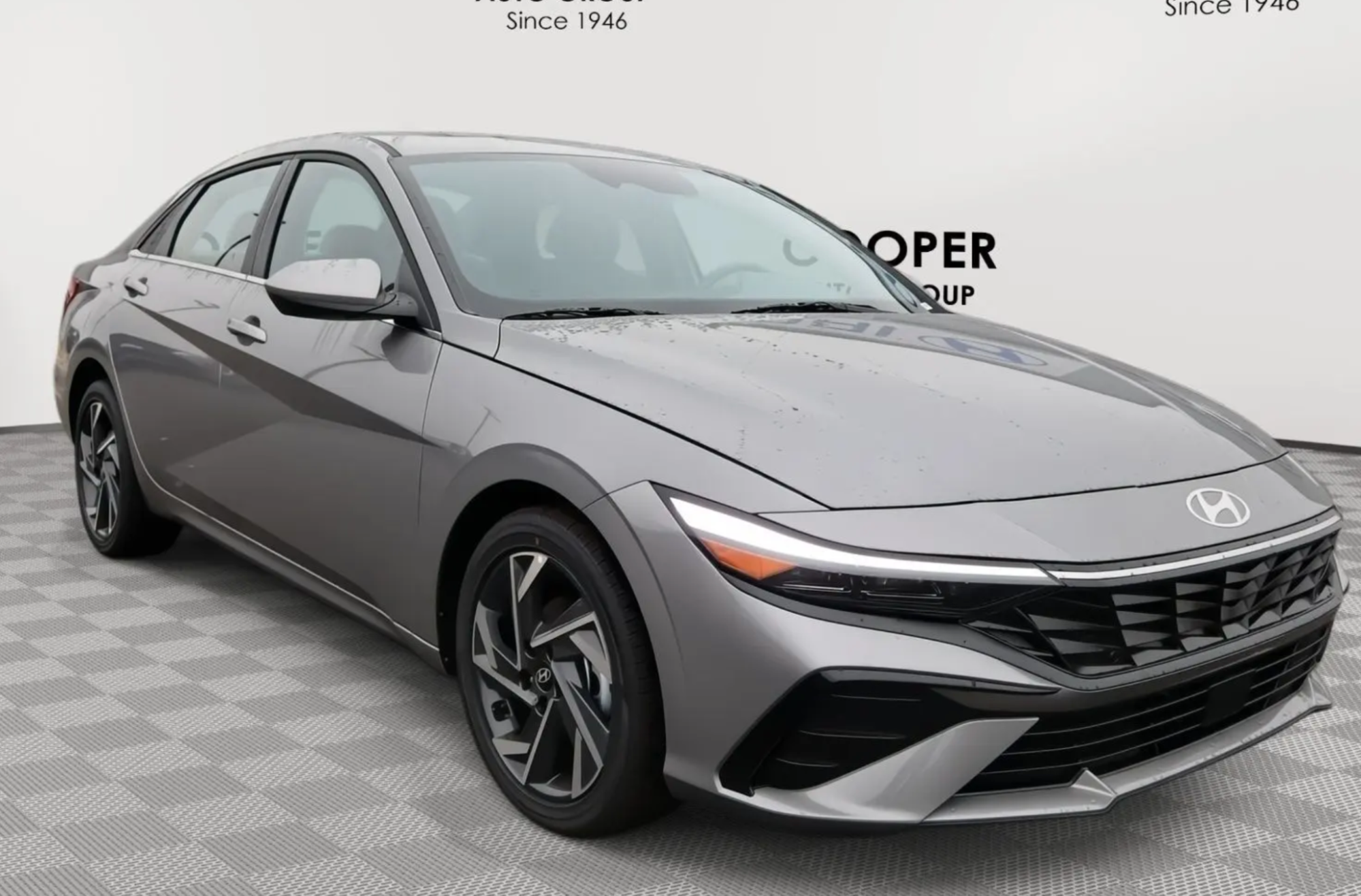This detailed comparison examines both sedans across key areas, including performance, interior space, technology features, safety systems, and overall value.
We'll break down the specifications and highlight each model's characteristics to provide the information needed for your purchasing decision.
Ready to dive deep into the specifications and features?
Continue reading for our comprehensive breakdown of both vehicles across all key comparison areas.
Table of Contents
-
1Driving Dynamics and Performance Mastery
Explore engine specifications, acceleration, handling characteristics, and overall driving experience between both vehicles.
-
2Sleek Styling and Exterior Innovation
Compare design aesthetics, exterior features, lighting technology, and visual appeal of both sedan models.
-
3Interior Comfort and Cabin Excellence
Analyze seating comfort, material quality, interior space, and overall cabin experience for passengers.
-
4Advanced Tech and Connectivity
Examine infotainment systems, smartphone integration, digital features, and connectivity options.
-
5Safety Systems and Ratings
Review safety features, crash test ratings, and driver assistance technologies available in both models.
-
6Fuel Economy and Environmental Efficiency
Compare fuel efficiency ratings, environmental impact, and long-term cost savings between both vehicles.
-
7Everyday Practicality and Space
Assess cargo capacity, passenger space, storage solutions, and practical features for daily use.
-
8Value, Warranty, and Cost of Ownership
Analyze pricing, warranty coverage, maintenance costs, and overall value proposition of each vehicle.
-
9Final Insight: Why Elantra is Your Ideal Choice
Comprehensive conclusion highlighting the Hyundai Elantra's advantages and why it stands out as the superior choice.
-
1Driving Dynamics and Performance Mastery
Explore engine specifications, acceleration, handling characteristics, and overall driving experience between both vehicles.
-
2Sleek Styling and Exterior Innovation
Compare design aesthetics, exterior features, lighting technology, and visual appeal of both sedan models.
-
3Interior Comfort and Cabin Excellence
Analyze seating comfort, material quality, interior space, and overall cabin experience for passengers.
-
4Advanced Tech and Connectivity
Examine infotainment systems, smartphone integration, digital features, and connectivity options.
-
5Safety Systems and Ratings
Review safety features, crash test ratings, and driver assistance technologies available in both models.
-
6Fuel Economy and Environmental Efficiency
Compare fuel efficiency ratings, environmental impact, and long-term cost savings between both vehicles.
-
7Everyday Practicality and Space
Assess cargo capacity, passenger space, storage solutions, and practical features for daily use.
-
8Value, Warranty, and Cost of Ownership
Analyze pricing, warranty coverage, maintenance costs, and overall value proposition of each vehicle.
-
9Final Insight: Why Elantra is Your Ideal Choice
Comprehensive conclusion highlighting the Hyundai Elantra's advantages and why it stands out as the superior choice.
2025 Hyundai Elantra vs. 2025 Toyota Corolla


Detailed Comparison Overview
2025 Hyundai Elantra
The Elantra features a contemporary design with an updated interior that incorporates improved materials and technology from the 2024 model refresh. The lineup includes multiple powertrain options: a fuel-efficient 2.0-liter naturally aspirated engine, a 201-horsepower turbocharged N Line variant, and a high-performance N model producing over 275 horsepower.
2025 Toyota Corolla
On the other hand, Toyota continues the Corolla with modest styling updates, offering sedan and hatchback body styles with reliable powertrains. Its standard 2.0-liter engine produces a healthy 169 horsepower, slightly more than the Elantra's base unit, but it rides on a suspension tuned primarily for comfort over agility. The Corolla's hybrid variant shines with excellent fuel economy and an optional AWD system, but overall, the sedan's cabin space and tech are less competitive.
Driving Dynamics and Performance Mastery
Key Dimensions and Specifications
Performance Specifications Comparison
| Performance Metric | 2025 Hyundai Elantra (Base) | 2025 Toyota Corolla (Base) |
|---|---|---|
| Horsepower | 147 hp | 169 hp |
| Torque | 132 lb-ft | 151 lb-ft |
| 0–60 mph | ~8.1 seconds | ~8.2 seconds |
| Suspension (Rear) | Torsion beam (base), Multi-link (N Line) | Multi-link |
| Handling Focus | Balanced, agile | Comfort-oriented |
| Braking Distance (70-0 mph) | Approx. 175 ft | Approx. 174 ft |
Driving Dynamics and Performance Mastery
Powertrain Variety
Transmission and Drive Modes
The Elantra's Intelligent Variable Transmission offers smooth shifts and responsiveness in normal trims, while the sportier 7-speed dual-clutch transmission on the N Line improves throttle response and driver engagement. Drive mode selectors available across trims provide tailored driving experiences from economy to sport, a versatility not matched by the Corolla's CVT.
Interior Comfort and Cabin Excellence
Hyundai's cabin refinement in the Elantra offers an updated, driver-focused dashboard layout with premium textures, spacious seating with generous rear legroom, and plush cloth or leatherette surfaces depending on trim. The Elantra's rear passengers benefit from 38 inches of legroom—comfortably surpassing the Corolla's 34.8 inches—ensuring enjoyable longer journeys from Guthrie to Midwest City.
The larger cargo volume of 14.2 cubic feet provides flexible storage, accommodating family trips or gear easily. Thoughtful touches such as dual USB-C ports, available wireless charging, and ambient lighting enhance daily usability.
Conversely, the Corolla's cabin is functional but less spacious and features predominantly hard plastics. While the hatchback option offers additional cargo flexibility, rear passenger legroom remains tight for the segment. Heated front seats and dual-zone climate control are offered in the upper trims, yet Hyundai delivers many of these amenities at lower price points across Elantra's lineup.
Interior Feature Comparison
| Interior Feature | Hyundai Elantra | Toyota Corolla |
|---|---|---|
| Front Legroom (in) | 42.3 | 42.0 |
| Rear Legroom (in) | 38.0 | 34.8 |
| Cargo Volume (cu.ft.) | 14.2 | 13.1 |
| Interior Materials | Soft-touch, H-Tex leatherette | SofTex® and fabric |
| Heated Front Seats | Available on mid and upper trims | Available on select trims |
| Ambient Lighting | Standard on Limited trim | Not standard |
| Steering Wheel | Leather-wrapped on SEL Sport and above | Leather-wrapped on upper trims |
Interior Comfort and Cabin Excellence
Hyundai's cabin refinement in the Elantra offers an updated, driver-focused dashboard layout with premium textures, spacious seating with generous rear legroom, and plush cloth or leatherette surfaces depending on trim. The Elantra's rear passengers benefit from 38 inches of legroom—comfortably surpassing the Corolla's 34.8 inches—ensuring enjoyable longer journeys from Guthrie to Midwest City.The larger cargo volume of 14.2 cubic feet provides flexible storage, accommodating family trips or gear easily. Thoughtful touches such as dual USB-C ports, available wireless charging, and ambient lighting enhance daily usability.
Conversely, the Corolla's cabin is functional but less spacious and features predominantly hard plastics. While the hatchback option offers additional cargo flexibility, rear passenger legroom remains tight for the segment. Heated front seats and dual-zone climate control are offered in the upper trims, yet Hyundai delivers many of these amenities at lower price points across Elantra's lineup.
Interior Feature Comparison
| Interior Feature | Hyundai Elantra | Toyota Corolla |
|---|---|---|
| Front Legroom (in) | 42.3 | 42.0 |
| Rear Legroom (in) | 38.0 | 34.8 |
| Cargo Volume (cu.ft.) | 14.2 | 13.1 |
| Interior Materials | Soft-touch, H-Tex leatherette | SofTex® and fabric |
| Heated Front Seats | Available on mid and upper trims | Available on select trims |
| Ambient Lighting | Standard on Limited trim | Not standard |
| Steering Wheel | Leather-wrapped on SEL Sport and above | Leather-wrapped on upper trims |
Advanced Tech and Connectivity
The Elantra leads in technology offerings that provide convenience and connectivity throughout your commute or road trip in the Oklahoma City metro area. Base models come equipped with an 8-inch touchscreen that can be upgraded to a 10.25-inch navigation system featuring real-time traffic updates and Wi-Fi hotspot capability. Standard Apple CarPlay and Android Auto are wireless on base trims, which is ideal for seamless smartphone integration. An industry-first Hyundai Digital Key 2 Touch system allows smartphone-based vehicle access and start on Limited trims, a convenience absent in the Corolla lineup. The Elantra Limited trim also offers a premium Bose 8-speaker audio system delivering rich soundstage clarity. By contrast, the Corolla offers a base 8-inch touchscreen on lower trims with an optional 10.5-inch display on limited-grade vehicles. Wireless smartphone integration and charging options are available, but less standardized across the range. While Toyota offers subscription-based Wi-Fi hotspots, the Elantra provides these services with simpler activation and enhanced Bluelink connected services.Technology Feature Comparison
| Technology Feature | Hyundai Elantra | Toyota Corolla |
|---|---|---|
| Touchscreen Size | 8.0-inch standard; 10.25-inch available | 8.0-inch standard; 10.5-inch on select trims |
| Apple CarPlay / Android Auto | Wireless standard | Wireless standard |
| Navigation | Available 10.25-inch system | Available 10.5-inch system |
| Digital Instrument Cluster | Up to 10.25-inch digital display | 4.2 to 7.0-inch gauge cluster |
| Wireless Charging | Standard SEL Sport and above | Available on select trims |
| Hyundai Digital Key 2 Touch | Standard on Limited and N Line | Not available |
| Premium Audio | Bose 8-speaker system on Limited | JBL system optional |
| Wi-Fi Hotspot | Available on SEL Convenience & higher | Subscription-based optional |
Safety Systems and Ratings
Safety remains paramount, and both contenders deliver comprehensive driver assistance technologies. The 2025 Hyundai Elantra holds a 2024 IIHS Top Safety Pick accolade, reflecting outstanding crashworthiness and pedestrian safety. Standard across all Elantra trims are forward-collision avoidance with pedestrian detection, lane keeping assist, rear cross-traffic alert, blind-spot collision warning, and safe exit warning to prevent collisions from opening rear doors. Higher trims add highway driving assist and adaptive cruise control with stop-and-go functions. The Corolla matches many safety features with its Toyota Safety Sense 3.0 suite, including adaptive cruise control, lane departure alert with steering assist, and automatic high beams. The key distinction lies in Hyundai's inclusion of some advanced alerts, such as Safe Exit Warning and Rear Occupant Alert, as standard equipment, along with a longer roadside assistance coverage. Additionally, the Elantra offers more driver aid standards at lower trim levels, giving Oklahoma customers from Norman to Bethany enhanced peace of mind without extra packages.Safety Feature Comparison
| Safety Feature | Hyundai Elantra | Toyota Corolla |
|---|---|---|
| IIHS Top Safety Pick | 2024 (with good ratings across categories) | 2023 model year |
| Standard Safety Suite | FCA-Pedestrian, Blind Spot, Lane Keep Assist, Rear Cross-Traffic, Safe Exit Warning | Toyota Safety Sense 3.0 |
| Adaptive Cruise Control | Available from SEL Convenience trim and above | Standard across most trims |
| Rear Occupant Alert | Standard | Not available |
| Roadside Assistance | 5 years/unlimited miles with 24/7 Hyundai Roadside Assistance | 3 years/36,000 miles |
Fuel Economy and Environmental Efficiency
Efficiency-conscious drivers from Edmond to Moore will appreciate the Elantra's remarkably efficient powertrains. With its standard 2.0-liter engine, the vehicle posts EPA estimates of 32 mpg city and 41 mpg highway, closely matching the Corolla's 32/41 mpg ratings, though the Elantra shows a small advantage in overall combined mileage. Elantra's hybrid trim achieves up to 50 MPG combined, reflecting excellent real-world fuel savings, with a smooth transition between electric and gasoline power. The Corolla hybrid offers similarly competitive mileage—up to 53 MPG city / 46 MPG highway—but lacks Elantra's broader tech integration and warranty protection.Fuel Economy Metric Comparison
| Fuel Economy Metric | Hyundai Elantra | Toyota Corolla |
|---|---|---|
| Base Engine Combined MPG | 36 MPG | 33 MPG |
| Base Engine City / Highway | 32 / 41 MPG | 32 / 41 MPG |
| Hybrid Combined MPG | 50 MPG | 50-53 MPG |
| Hybrid City / Highway MPG | 49 / 52 MPG | 53 / 46 MPG |
| Real-World Highway (75 mph) | 38 MPG (base), 48 MPG (hybrid) | ~40 MPG across models |
Everyday Practicality and Space
In daily use scenarios like shuttling family members from Guthrie or packing for weekend escapes around Norman, interior comfort and storage volume are vital. Elantra's cabin is not only larger in rear leg room but offers 14.2 cubic feet of trunk space—a notable edge over the Corolla's 13.1 cubic feet in the sedan configuration.User-friendly interior features, including intuitive storage cubbies, multiple USB-C charging ports throughout the cabin, and wireless charging pads on well-equipped trims, enhance convenience. The hands-free smart trunk release on Limited trims is a thoughtful luxury absent on the Corolla.
Practicality Feature Comparison
| Practicality Feature | Hyundai Elantra | Toyota Corolla |
|---|---|---|
| Rear Legroom (inches) | 38.0 | 34.8 |
| Trunk Cargo Volume (cu.ft.) | 14.2 | 13.1 |
| USB Ports | 4 (front and rear) | 4 (front and rear) |
| Wireless Charging Pad | Standard SEL Sport and above | Available on upper trims |
| Hands-Free Trunk Release | Standard on Limited | Not available |
Value, Warranty, and Cost of Ownership
An important aspect for buyers in the Oklahoma City area is ownership peace of mind. Hyundai's class-leading powertrain warranty of 10 years / 100,000 miles doubles Toyota's 5 years / 60,000 miles coverage, representing huge long-term savings potential. This industry-best guarantee reflects Hyundai's confidence in vehicle durability and provides Midwest City residents with extra assurance over the life of their vehicle.Additionally, Hyundai backs the Elantra with three years / 36,000 miles of complimentary scheduled maintenance—a program Toyota offers only for 2 years / 25,000 miles. These perks reduce the hassle and cost of ownership, especially for first-time buyers seeking reliability without surprise expenses.
Ownership Aspect Comparison
| Ownership Aspect | Hyundai Elantra | Toyota Corolla |
|---|---|---|
| Powertrain Warranty | 10 years / 100,000 miles | 5 years / 60,000 miles |
| Basic Warranty | 5 years / 60,000 miles | 3 years / 36,000 miles |
| Complimentary Maintenance | 3 years / 36,000 miles | 2 years / 25,000 miles |
| Roadside Assistance | 5 years / unlimited miles | Limited coverage |
Why the Elantra is Your Ideal Choice
The Clear Winner in the Compact Sedan Segment
With superior rear passenger room, larger cargo capacity, a premium-infused interior, and a far stronger warranty program, the Elantra is designed to meet and exceed the practical needs of families and commuters alike while providing drivers with confidence and refinement.




